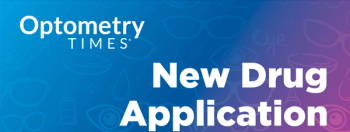
Topical presbyopia management: Threat or opportunity?
New technology and management options are going to continue to hit the market. How ODs approach each one of them will determine whether ODs benefit or not.
The industry is nearly 9 months into a COVID-19 world. To most, this has become somewhat surrealistic. 2020 was to be the “Year of Eyecare.” However, there have been many disrupters both outside and within our industry. Disruptive technologies have come to the forefront as ODs adapt to this new “for the time being” environment.
Fortunately, most have adopted new processes, evaluated and made adjustments to their business practices and patient flows, and learned how to adopt technology more quickly. This is a good thing: Being proactive about change is something that lies at the very foundation of success, rather than being reactive with knee-jerk responses to a situation that may result in sub-optimal outcomes.
While the ophthalmic world has been restructuring itself to address changes in protocols and patient demand, the ophthalmic industry has been operating full steam ahead with new technologies and solutions to age-old problems. One of the most interesting that is coming to market is the pharmaceutical approach to managing presbyopia.
Myopia treatment
Multiple manufacturers have been working on a topical treatment that will reduce an individual’s dependence on nearpoint correction. Many, if not most, will be coming to market within the next 12 to 18 months.
“Oh no!” ODs say. “That will decimate my optical business, particularly the high-end and high-profit progressive lens business.”
Should ODs be scared or threatened by this potentially disruptive technological development? Or, should they use the time between now and product release to develop business strategies and tactics to incorporate this new technology into their practices and make it an additive or adjunctive approach to their current optical solutions?
How you approach change
The answer to that question lies in how you as an OD, as an individual or a business owner, approaches paradigm shifts in the marketplace. Lord knows, ODs have had many “threats” to their practice business models in the past, and yet they seem to have survived.
In fact, I submit that ODs have thrived despite the perceived threat of their businesses collapsing. Think about recent market disruptors. How did you react when refractive laser surgery came to market? How did you react when multifocal and toric IOLs appeared as part of your local surgeons’ menu of services? How have you reacted to any of the perceived threats to their businesses?
How you approach a situation like this is the most critical thing.
Change is something that is very difficult for most people to handle. In fact, to some, it may be the most feared 6-letter word around.
Let’s face it. Your optical probably still generates 60 to 65 percent of your total revenue. Any threat to this revenue source would certainly be detrimental to your bottom line, wouldn’t it?
I submit to you that the individuals who are going to be successful in adopting a new technology such as a topical agent for the management of presbyopia are those who have learned to do three things very well when it comes to “change.”
They have learned to:
• Anticipate change
• Embrace change
• Direct change
These actions create the best opportunity for their patients and their practices. In actuality, these ODs have been successful in transforming a perceived threat into an actual opportunity. They have learned that disruptive change can be beneficial to their bottom lines because they plan properly for success.
Taking a closer look
Let us examine the reality of the situation. Most pharmacological agents developed to manage presbyopia will most likely not replace near-point corrective lenses but will complement them by giving patients choice.
Most patients likely to adopt a topical treatment will still require near-point correction. Providing patients with the freedom to choose which solution is best for their lifestyles is key. They may prefer their progressive lenses from your optical while working during the day but prefer being able to be glasses-free when going out to dinner. What is important: If you provide the patient with options that they can control and use according to their lifestyle choices—you win and they win; the ultimate solution!
Secondly, most patients love new medical technology that benefit them. They get excited about new solutions to age-old problems. Find me a happy first-time presbyope who screams “Hallelujah” when you break the news that they need near-point correction for the first time. Being on the cutting edge in offering new technologies to your patients is not only good for them, but great for the reputation of your practice as well.
Patient demographics
Let’s also think about the demographics of the patient who would be interested in this technology, the 40-to-55-year-old. This demographic group tends to have a better economic profile and higher disposable income—and it has a higher proportion of other ocular conditions as well.
Let’s examine a few such as dry eye, age-related macular degeneration (AMD), and glaucoma, disease states that ODs daily diagnose and treat. Studies that I have been involved with and economic models that I have developed demonstrate that these disease states are annuities for a practice, each generating 6-figures of revenue when calculated by existing incidence, prevalence, and reimbursements.1
Individuals in this age demographic are at the core of any dry eye practice, any preventive AMD practice, and any glaucoma specialty practice, and of course a large part of optical sales. All are financially lucrative as well, not only for the value of diagnosing, treating, and managing the disease state over time—but a well-managed patient likely has a much higher chance of staying in your practice because of high-touch frequency and a significantly smaller chance of leaving your practice and going online to find things that you don’t offer.
Consumer behaviors are generally the biggest threat to a practice.You know what I’m talking about… The patient that consults “Dr. Google,” self-diagnoses and self-treats, going outside of the typical Dr-Patient relationship.Future trends towards virtually based online examinations and online purchases of glasses and contact lenses can also be a perceived threat to the traditional methodology of providing eye care.
Offering new and emerging technologies to a demographically attractive group can not only be a great offensive strategy but inherently a defensive one as well.
Take the optical, for example. According to The Vision Council, 54 million pairs of over-the-counter (OTC) readers are sold per year (30 million patients), and 90 percent are sold outside of your optical2—all revenue that you are not getting. Imagine offering a technology that would be very attractive to this demographic segment and tie the patient directly back to your practice. As an added benefit, you would also be building a successful referral base as well.
Need to get it right
Now, to be clear, there are plenty of opportunities for the introduction of a new technology like this to go awry. ODs are going to need help from industry to get this right—such as significant and meaningful direct-to-consumer (DTC) campaigns developed by the ophthalmic industry to properly educate consumers and drive them into our practices.
Practitioners will need to prepare their practices to receive these consumers, transform them into compliant patients, and care for all of their needs. This doesn’t happen by accident—this happens with great leadership, a great vision for success, and of course, a great team.
The bottom line
The bottom line is simple. New technology and management options are going to continue to hit the market. How ODs approach each one of them will determine whether ODs benefit or not. Each one could be a body blow to a practice that continually erodes the patient base, or each one could be a boon to a practice that allows the OD to not only maintain the patient base but to grow it by providing enhanced services and products.
So, now I put the question to you; Managing presbyopia with a topical agent—threat or opportunity? The answer is exclusively yours, so make the most of it.
References
1. Rumpakis J. Economics of apathy. Rev Optom. Available at: https://www.reviewofoptometry.com/article/economics-of-apathy-44418. Accessed 10/27/20.
2. The Vision Council. U.S. Optical Market Overview. Available at: https://www.thevisioncouncil.org/sites/default/files/2_Steve-Kodey-Market-Update.pdf. Accessed 10/21/20.
Newsletter
Want more insights like this? Subscribe to Optometry Times and get clinical pearls and practice tips delivered straight to your inbox.



















































.png)


